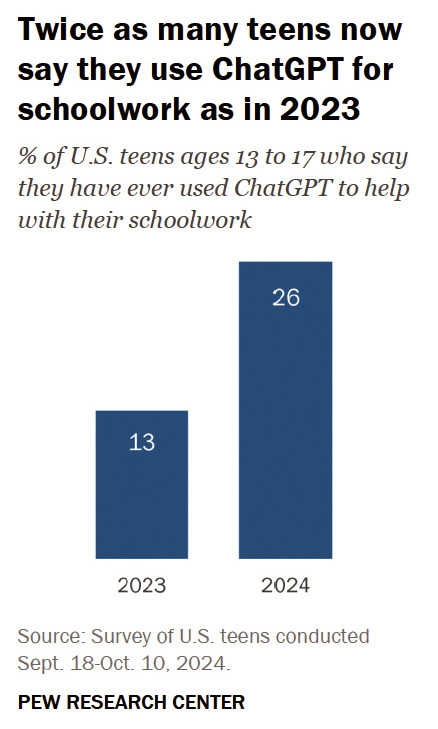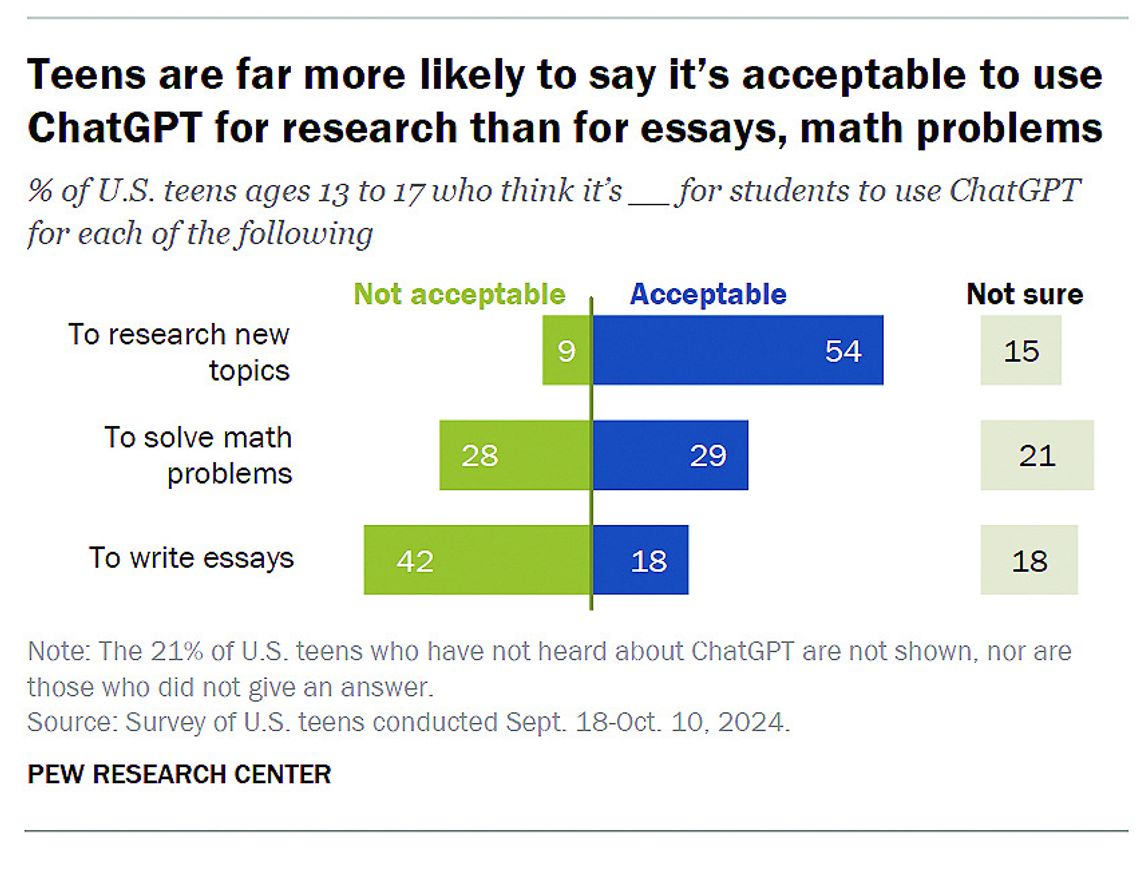Artificial Intelligence in the classroom is here to stay, and school officials are learning on the fly
YOU MIGHT NOT KNOW THE NAME JOHN McCARTHY, but if you’re a parent of a high school (or even an elementary) student, his work some 60 years ago will have, or already has had, an effect on your child.
It was McCarthy who, in 1956 is said to have coined the phrase “artificial intelligence” (“AI,” for short), introducing the next step in technology in our world, and it’s very much in our schools. It actually has had a presence in our schools for years, as students are accompanied by their Smartphones inside and outside their school every day. But, like how we have made the jump from landlines to flip phones, then to Smartphones, schools are having to get used to the next infiltration of technology with Generative Artificial Intelligence (GenAI) in every corner of their buildings.
Artificial Intelligence is a transformative technology that enables machines to perform human-like problem-solving tasks. From recognizing images and generating creative content to making datadriven predictions, AI can empower businesses to make smarter decisions at scale.
During in-service last month, educators in the Tracy Area Public School District were given a beneficial crash course on AI, including Chatbots

‘
It’s just going to keep expanding … how young do you want to go with this stuff? And how much screen time do you want? It’s scary, at times, if you don’t use it correctly. How young do you teach kids to use it?
— TAES PRINCIPAL MICHAEL MUNSON and ChatGPT, a website that garners more than 46 billion annual web visits. It has been reported that 26% of all ChatGPT users are between the ages of 13-17 — which means high school students. That number, school staff was told, drops almost entirely during the months of June, July and August.
“What are they using it for? They’re using it for school,” TAPS Supt. Chad Anderson said. “One of the concerns that was talked about — ChatGPT, you can talk to your phone or computer and set it up so it replies to you … a lot of child physiologists are finding that kids and even adults are developing relationships with ChatGPT.”
According to the Pew Research Center, that 26% figure is up from 13% in 2023. Teens in 11th and 12th grade (31%) are more likely than seventh- and eighth-graders (20%) to say they use ChatGPT for their schoolwork. About a quarter of ninth- and 10thgraders say this, which is not significantly different from the other two groups.
Beyond any social ramifications of AI, those like Anderson are now having to keep a closer eye on students with the integration of even more technology in schools.
“It’s already in the school; we use AI without even knowing it,” he said. “It is embedded in everything, it is the future, and it’s not going anywhere. (David Berner, the presenter at the in-service session) compared it to electricity, how it’s a part of our everyday lives. It’s here, it’s here for good and it’s growing every single day.”
Anderson said any new technology is a concern for all school administrators and educators. That is why the district invited Brener, Southwest West Central Cooperative Technology Integration Specialist, to the high school — to give everyone a high-level, basic understanding of what AI is, how students are using it, the dangers, and how teachers can use it to help them do things like creating lesson plans.
“We can use Magic School where teachers can use it to help create lessons,” Anderson said. “We’ve got a framework to make sure it’s being used safely, ethically and effectively.”
Over in the elementary school, Principal Michael Munson said kids are learning in different ways almost every year — from traditional books, to iPads and laptops and now AI.
“It’s just going to keep expanding … how young do you want to go with this stuff?” Munson said. “And how much screen time do you want? It’s scary, at times, if you don’t use it correctly. How young do you teach kids to use it?”
The worry at the younger grade levels is kids not being able to develop their creativity; the more they use technology, the less they will potentially — albeit unknowingly — think for themselves.
“At what level do you teach them?” Munson said. “That’s what a lot of kids are relying on now — ‘I’m not going to do anything, wait until the last second and use AI to help me try to get by.’ It’s hard to determine when to really start diving into it.”
Munson said the earliest the school would do just that is at the fifth- and sixthgrade levels, perhaps just introducing it to younger students.
• IS THERE TOO MUCH TECHNOLOGY IN OUR SCHOOLS?
With the fluidity of technology in today’s world, school staff is responsible for adapting at a very fast pace. Anderson said part of their jobs is to continue to go with the changes and identify with technology, and figure out how to restrict it and find ways to monitor it.
“Either way, we’ve got to become educated,” said Anderson. “We have to become AI-literate.”
When Anderson started in the field in 1995, the internet was very wet behind the ears and computers were being introduced into classrooms for teachers. Since then, all schools have had to not just roll with the constant shifts, but adapt and accept them.
“It’s made all of our jobs more challenging — moreso than easier,” he said. “Things have been consistently added to the plates of our teachers. But it is what it is. We have to learn it, we have to adapt. It’s there, everywhere.”
Anderson found school staff was all over the board in terms of their personal knowledge of AI; some knew nothing about the technology, while others have already been using it to help with lesson planning, or in their personal lives.
“It was definitely a learning experience and eyeopening,” he said. “There were a lot of things I learned; I didn’t realize you could ask AI to create a video that looks real.”
Anderson said he is on board with teachers using AI to create lesson plans, to a certain extent. He said AI gives them an avenue to expand what they do beyond just using books in efforts to reach individual students.
“The things that AI can do will blow your mind,” Anderson said. “And it’s changing every day. It boils down to making sure teachers understand AI, how the kids are using it and teaching them the right way to use it.”
Munson agrees with Anderson in that teachers and staff need to start using AI in some fashion. But there seems to be a fine line between using it for assistance and relying on it.
“Do you want to take away your creativity as a teacher? No,” Munson said. “You can tweak things and it’s still your own — teachers can still produce most of it. It’s always scary; the start of the internet was exciting and scary at the same time.”




